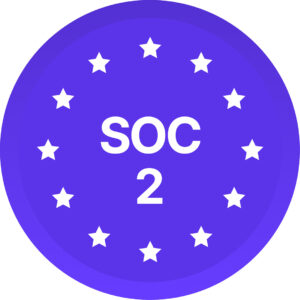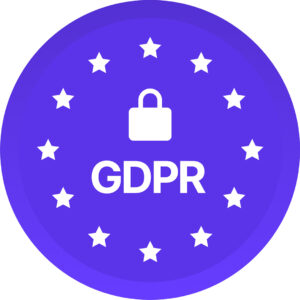We’ve all heard the term “ally,” used to describe someone who is not directly impacted by oppression but who takes action to stand up for injustice and to change inequity. Allyship is the noun form of the same idea – the practice or state of fighting oppression.
What does allyship mean in the workplace?
Rima Olinger, managing director of North America partners for AWS, offers a straightforward allyship definition in the workplace: “If you are a leader and you see something that is happening that is wrong around you and you stand up for it, that is what allyship is.”
While in the world of social justice, an ally might speak up for a specific group facing inequity in a community or a culture, in the workplace allyship is often about tackling leadership and cultural structures that can hold some employees from reaching their full potential and career opportunities. It can mean challenging unequal pay, for example, or addressing the lack of diversity.
Why is allyship important in the workplace?
When inequity occurs in workplaces, it can have a disproportionate impact. The average American spends over 90,000 hours or about a third of their life at work, and our jobs have a significant impact on our physical and mental health, our incomes, our lifestyles, and our identities. When work becomes a source of frustration or challenge because of systemic inequity, it can affect an individual’s life outside of work hours, too. In fact, you can read more about this in our Reducing Workplace Stress in the Remote Work Era article.
In these situations, leadership and organizations can have blind spots that prevent employees from outside of majority groups from gaining the power to make a change. This can create a closed-loop, where a worker is not given the same opportunities as others but because they do not have the same voice as someone from a majority group, their concerns may not be treated as seriously. The inequity does not get addressed. Using allyship as a diversity and inclusion tool in the workplace challenges this system and uses majority or leadership voices to amplify all voices.
How can it be put into practice?
Allyship does not mean simply hiring diverse employees or creating a written policy. It is an ongoing process. Putting allyship into practice means getting buy-in from the team and from leadership and creating a plan for using majority voices to create more space for diversity. This can mean:
Creating a place at the table
Creating committees, roundtables, & groups at your company to address inequity is important, & even more so when everyone gets a chance to speak or a chance to contribute in whatever way they feel most comfortable.
Developing mentorship opportunities
Women & minorities are more likely to report that mentorship contributed positively to their careers. In one study, 30% of women & 32% of minorities reported that mentoring is very important for their careers, compared to 27% of all employees reporting it as very important.
Tracking & discussing metrics
Data verifies & quantifies where inequality may be happening. Keeping track of metrics can give companies a specific number or specific goals to aim for, making progress easier to track.
Taking a new approach to feedback
It’s important for leadership to hear feedback to become good allies, but blind spots may prevent the right feedback from getting through. For example, leaders may not know how to ask about a person’s intersectional experience. To garner feedback for allyship, it’s important to create a space where all individuals know they can share ideas without worrying about negative repercussions. It also means creating different options for offering feedback. Some team members may feel more comfortable sharing feedback anonymously for now. Or they may need to hear open-ended questions such as “what am I missing?” or “what would help our team to become more inclusive?”
Becoming serious about tackling gaslighting & diminishing behaviors
When allies see something amiss, they say or do something. Normalize speaking up about inequity or discrimination & take steps to prevent gaslighting or minimizing language. For example, if someone says that a statement made them uncomfortable, do not diminish their experience by saying “he was just joking” or “she didn’t mean it.”
If you’re looking for ways to enhance the experience of your workers, there are interesting examples of allyship in the workplace at some companies. Microsoft launched a global allyship program in 2019, allowing workers to take a voluntary course to learn how to have workplace conversations and difficult conversations in inclusive, empathetic ways. Forté Foundation is a non-profit group advocating for women in business. Their “Men as Allies” efforts bring men into the conversation. Kroger, a large, regional grocery chain operating under 28 different names, has created allyship guides to help members of their company become better supporters and allies.
While no company’s efforts are perfect, more and more organizations are making formal allyship efforts. Looking at allyship examples can provide inspiration and ideas to try.
Why is allyship good for DEI & for companies?
Allyship can foster authentic inclusivity because it creates an all-together workplace and culture where workers are less likely to feel isolated and on the margins. Allyship also creates a better culture by including everyone in the conversation and action of inclusion. Instead of pushing the conversation to one-time actions such as the occasional hire, allyship encourages all individuals at a company to ask themselves about their blind spots and what they can do to elevate voices. It gives everyone a role to play in improving a workplace.
Allyship can also help companies become more attractive by creating spaces where people feel included. When everyone in a workplace calls out painful behaviors and everyone pulls together for equity, companies create a better culture which in turn can help attract better talent. With more voices free to speak up, companies can also take advantage of a variety of ideas and viewpoints that can foster success.
How can Diversio help?
Metrics are the foundation of allyship. With metrics, it becomes possible to see where your business currently is in terms of Diversity, Equity, and Inclusion (DEI) and how you stack up to your industry. Data shines a spotlight on blind spots and helps quantify DEI so real changes can be made.
Diversio is your partner in allyship. Diversio can take the pulse of your company and gather diversity metrics. As a third-party provider who never releases raw data to you, Diversio lets employees feel more comfortable in answering questions. Once data is gathered, the Diversio AI-powered DEI Dashboard lets you see your DEI metrics and track them over time. The unique Recommendation Engine™ turns data into practical steps you can start taking to improve Diversity, Equity, and Inclusion at your business.
Allyship begins with knowing what is going on at your business and working to make needed changes. By shining a light on your business and giving you practical suggestions for change, based on your specific company makeup and industry, Diversio helps turn your desire for change into a plan for action. Book a demo today to see what Diversio can do for your team.

